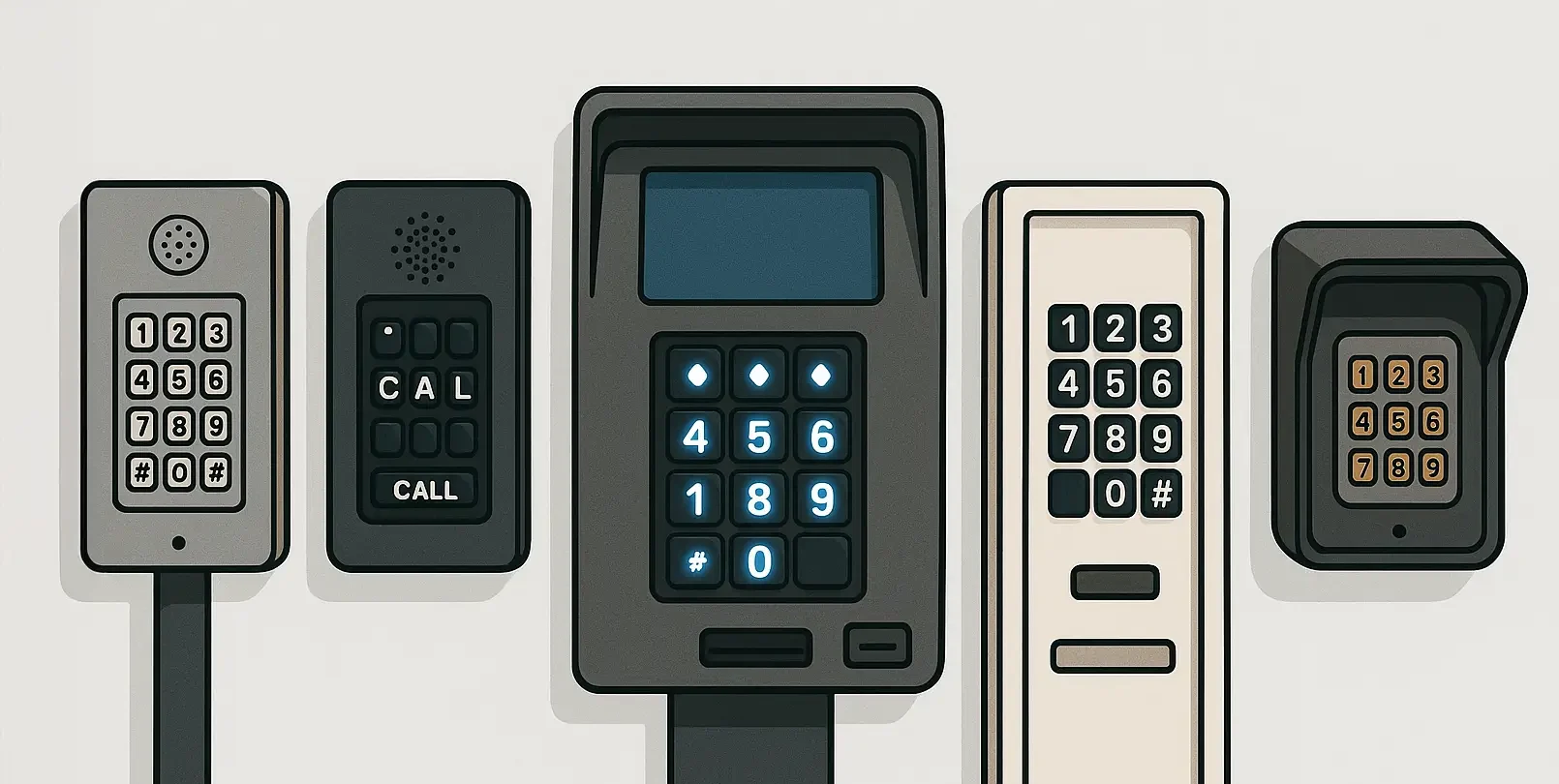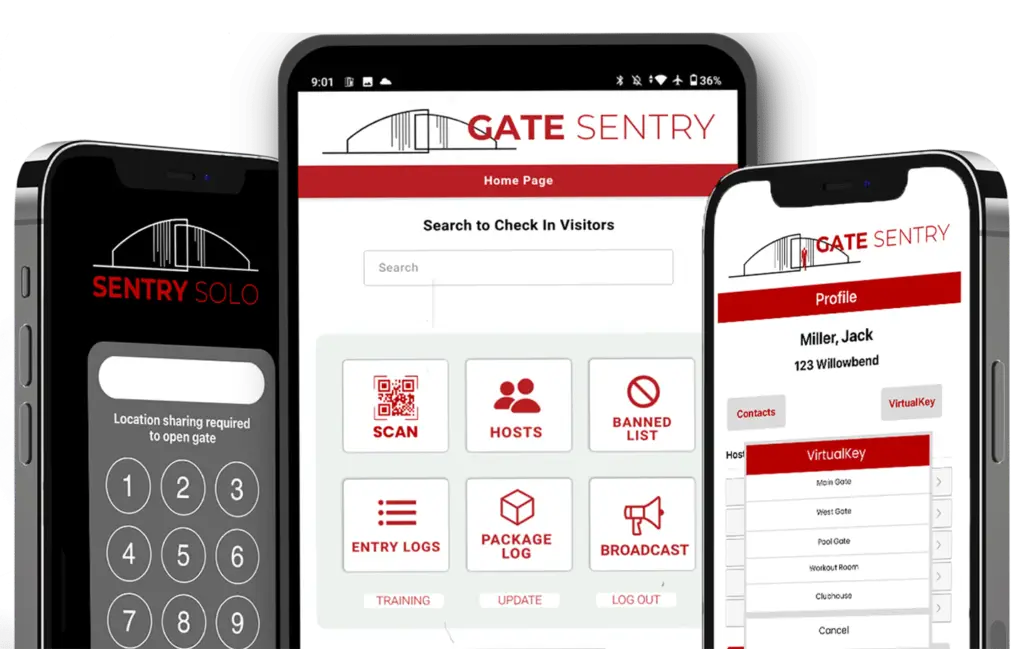The Hidden Costs of Keypad Access Control for Self-Storage & A Smarter Alternative

If you're considering upgrading your self storage security system, this is a must-read. It’s Saturday morning at your storage facility, and a line of tenants is forming at the gate. The keypad is unresponsive—again. Your phone is ringing with frustrated customers who just want to access their belongings. Your on-site property manager is trying to manually check tenants in, but the line keeps growing. This scenario is all too common in the storage industry.
Security vendors often pitch complex hardware, confusing access control software, and "white-glove" support that vanishes when issues arise. The result is predictable: frustrated staff, security gaps, and angry tenants. Your team ends up reverting to manual logs because the expensive access control system you invested in simply doesn't work reliably. This article cuts through the sales pitch to reveal the true cost of outdated storage access control and introduces a more efficient, modern access control solution.
Are Keypads and Kiosks Really the Best We Have?
For decades, wired keypads, callboxes, and kiosks have been the standard entry system for self storage gate access. They may have sleeker touchscreens today, but beneath the surface, it’s the same old hardware: clunky, expensive to install, and even more expensive to repair.
In a world of mobile-first, cloud-based technology, why are facilities still tethered to this model? Here are four major reasons these legacy security systems are failing operators and what’s rapidly replacing them.
1. The High Cost of an Invasive Installation
The single biggest hidden cost of a traditional access control system is the physical installation. It’s an expensive, disruptive process that goes far beyond the price of the keypad itself.
Expensive Trenching and Wiring
Running power and data lines from your office across asphalt and concrete to each storage gate is invasive and costly. This process disrupts tenant traffic and can take days to complete.
Contractor and Electrician Fees
You have to coordinate and pay for skilled labor to trench, run conduit, pull wires, and connect the system. This adds thousands to the initial cost.
Expansion Is Prohibitively Expensive
Need to add a second gate or control access to a building with premium climate controlled units? You’re forced to repeat the entire trenching, wiring, and installation process, effectively doubling your costs and complexity. This makes it incredibly difficult to adapt your facility's layout as it grows.
2. You're Locked into On-Site Hardware
Traditional systems chain you to physical hardware located in your office. This creates a single point of failure that can paralyze your entire operation.
Requires On-Site Servers
Most older systems require a dedicated desktop computer running proprietary access control software. This means purchasing, hosting, and maintaining expensive computer equipment at your facility.
Vulnerable to Downtime
If that local server crashes due to a power surge, hard drive failure, or software glitch, your entire access control system goes down with it. The gate won't open, and your business grinds to a halt until a technician can fix it.
The "Fake Cloud" Trap
Many newer systems claim to be "cloud-connected," but they still rely on a local server that simply syncs data to the cloud periodically. The core vulnerability remains: if the local hardware fails, the gate stops working. A true cloud based access control system shouldn't have a critical on-site dependency.
3. Critical Security Gaps and Limited Visibility
The primary job of an access system is security, yet keypad systems have inherent flaws that make it impossible to truly know who is on your property.
The Shared Code Problem
Tenants often share their personal gate codes with family members or friends. This common practice destroys your audit trail. You can't be sure who is actually entering your facility, creating a major security and liability issue if theft or damage occurs.
Basic, Unreliable Logging
Most systems only log that a code was used, not who used it. This data is often stored locally, making it difficult for a regional or off-site property manager to access quickly. You lose the ability for effective, real time oversight of tenant access.
No Real-Time Insights
Without a live, detailed activity log, operators lack the information needed for effective security monitoring. You can't see trends, spot suspicious activity, or quickly resolve disputes between tenants.
4. The Never-Ending Cycle of Maintenance and Repairs
Physical hardware, especially when exposed to the Texas elements, is on a constant countdown to failure.
Constant Component Failure
Keypad screens crack in the heat, buttons stick, circuit boards fry in electrical storms, and internal wiring corrodes from moisture. Insect nests are a common cause of short circuits.
Expensive On-Site Service Calls
When a keypad breaks, you have to pay for a technician to diagnose and fix it, leading to unpredictable maintenance budgets and extended downtime.
A Ticking Clock
Even brand-new equipment is simply a ticking clock, counting down to its next expensive service call. This cycle of repair and replacement is a hidden cost that drains profitability over the life of the system.
There’s a Better Way: Hardware-Free Digital Access
You don't have to be trapped in this cycle. What if your access control system had no physical hardware to maintain at all? This is the promise of hardware free access control. Imagine replacing your failure-prone keypad with a simple, durable sign with a QR code, powered entirely by the cloud.
This is the future of self storage mobile entry. When tenants arrive, the process is simple and intuitive:
- They scan the QR code with their smartphone’s camera.
- A secure virtual keypad instantly opens on their phone's browser—no app download required.
- They enter their unique PIN, and the gate opens.
The result is seamless digital access for tenants and a maintenance-free, fully trackable system for you—managed remotely, with real-time data. You can also extend security to individual units with smart locks for a unified gate-to-door flow.
Managers get real-time alerts for security events (forced gates, after-hours attempts), and deep integrations with storage management software (e.g., SiteLink, storEDGE) so access is automatically granted on move-in and revoked on move-out.
The Future of Self-Storage Access Control is Sentry Solo
Sentry Solo by Gate Sentry replaces outdated hardware with a simple, powerful, cloud-based access control solution. It eliminates maintenance costs, slashes total cost of ownership, and gives you complete control from anywhere.
Ready to upgrade your facility and eliminate hardware headaches for good?
Ready to Replace Your Outdated Keypad?
See how Sentry Solo's hardware-free solution can enhance security, simplify access, and reduce costs for your storage facility.
Get a Free QuoteGet a Free Quote

Schedule a Demo
Discover how our services can be tailored to your specific property needs, enhancing both security and efficiency.
